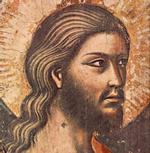Catholic Activity: Valentine-Making Ideas
To make valentines is truly a joy—but they must be started a week or two ahead of time. Here are some suggestions for materials and themes. These valentines have more of a religious focus, instead of the secular themes.
DIRECTIONS
For children who know their patron saints, we use their symbols. "Happy Valentine's Day to Teresa" should certainly be surrounded by flowers, and do tell little Teresa (if she doesn't know already) that the "Little Flower" was a name St. Therese gave to herself because she was one of God's little ones, not because she was one of God's pretty ones.
Martins can have coats sliced in half on theirs like the coat St. Martin of Tours shared with the beggar, or they can have little rats to suggest Blessed Martin de Porres, who had to scold his rats for nibbling the altar linens so that they moved straight-away to the garden.
Boys named Frank can have animals on theirs, for St. Francis. And boys named Joseph can have carpenter's tools on theirs for St. Joseph of Nazareth, or lambs or birds for St. Joseph of Cupertino, who once had lambs for Vespers and gave the nuns he served a little bird to sing in choir with them.
Kevin should have a blackbird on his for St. Kevin, who prayed with his arms outstretched through the tiny hut window. When a blackbird came and made her nest in his hand, he stayed there till her eggs were hatched — or so the legend goes.
Margarets and Margaret Marys should surely have hearts with flames for St. Margaret Mary and her Lover, the Sacred Heart. These are nicest if they are of cut paper with the flames cut to dart out from the center fold.
If there are many valentines to be made and simplicity and time are of the essence, we make lacy cut-outs, mount them on ladders, and paste them on various lovely papers. The smaller these are, the more intriguing. Although very little children cannot use small scissors too well, they can make ladders, and paste and mount the hearts that their older brothers or sisters or mothers make for them.
A simple technique for enhancing cut-out valentines is known as pinprick. It appears on the early Pennsylvania Dutch and German valentines. A hat pin or darning needle is used to prick designs or names or words through the folds of the cut-out before it is opened. The folded valentine should be pricked over a newspaper so the table beneath will not be marred.
Another type is the folded valentine. The trick with these is to refold them correctly after they have been opened. We use a piece of white typing paper cut square. First fold the four corners so that they touch each other in the center, thus making a smaller square (this is the way bandages are sometimes folded). Fold the four corners of this square, making another square; if there is room fold still another square. We end up with a tiny square folded note pasted shut with a heart sticker that "breaks" when it is opened. A design decorates the bottom of it, and inside it is decorated and inscribed with messages and symbols.
Another fold goes thus: a square piece of paper is folded diagonally, making a triangle. Fold it in half, making a smaller triangle. Take one of the end corners and fold it in to touch the apex of the triangle. Fold the other corner the same way, getting a square. Now fold the four corners of the square to the center and seal it with a heart sticker. These folded valentines are a nice way for children to give their parents or their teacher a spiritual bouquet for Valentine's Day, as there is plenty of room on them for all the writing.
Another kind of valentine message can be made of a rebus, one of those messages where the words are broken into syllables and the syllables pictorialized. For example I love you would be a drawing of an eye, a heart, and a capital letter U.
An acrostic is still another way of recording a message:
Much she loves thee
And tenderly.
Read up and down;
Your name has she.
Still another intriguing design is what was called "an endless knot of love." It is an interwoven ribbon such as seen often on illuminated manuscripts, or resembling one of the more complicated of the sea scout's knots illustrated in rope-tying manuals.
Perhaps some of the homemade valentines will lack the slickness and polish of the "boughten" ones, but we can compensate with variety and the many intriguing ways of putting them together. Many a conversation piece will result. Most of all, we want them to speak of true Christian love; and it is worth the time and effort and mussing up to help our children to think about this and about ways to express it. We can use St. Valentine's Day to learn more about love, and to teach our children that love is serious, that it is beautiful, and that it is commanded of us. "A new commandment I give unto you: that you love one another . . . as I have loved you." In the end it will be our love that is our measure.
Activity Source: Year and Our Children, The by Mary Reed Newland, P.J. Kenedy & Sons, New York, 1956






